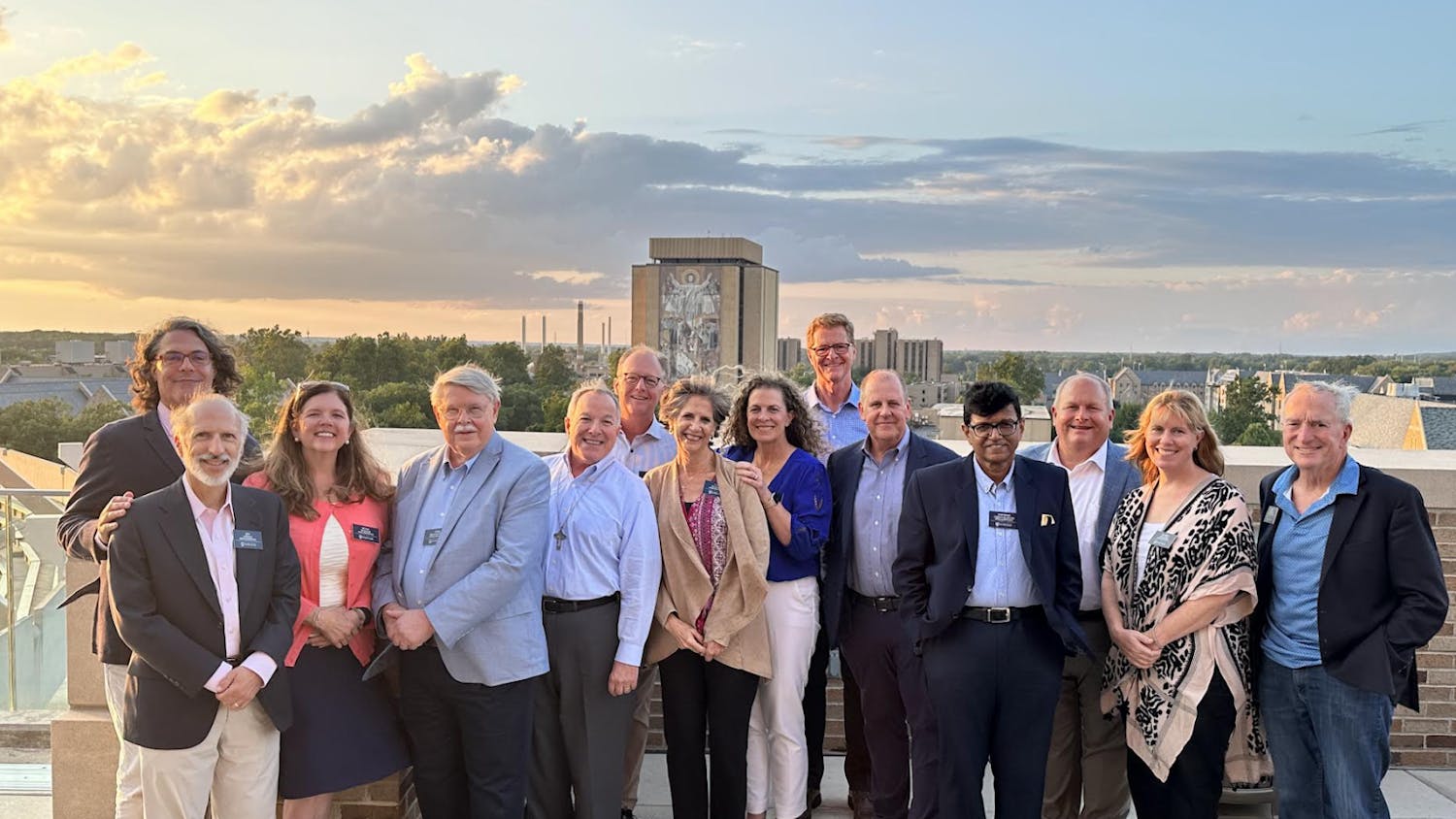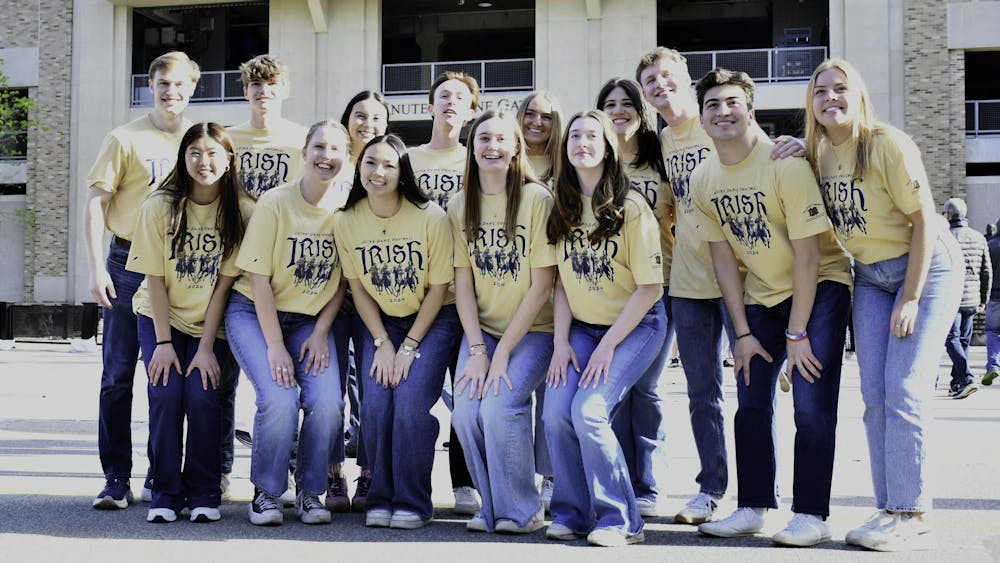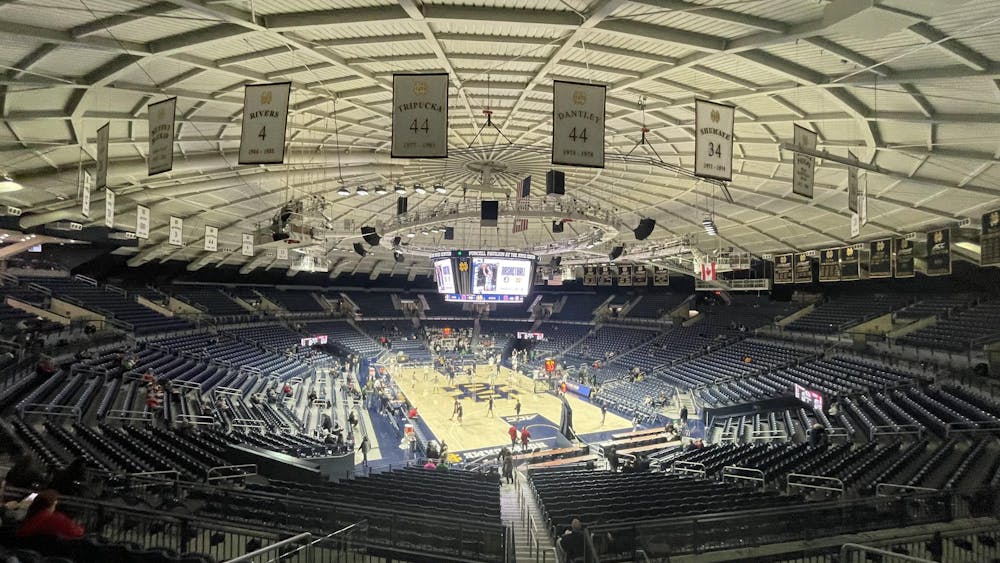The Snite Museum of Art sits in the middle of campus, surrounded by the Duncan Student Center, DeBartolo Hall and O’Shaughnessy Hall.
Ann Knoll, associate director of the Snite Museum of Art, said the arts have long had a presence on campus and continue to benefit Notre Dame, which is emphasized by the Snite’s central location.
The Snite saw its beginnings in 1874, when Fr. Sorin traveled to Rome and met Italian artist Luigi Gregori, then working as an art restorer at the Vatican. Fr. Sorin brought Gregori back to South Bend to decorate the interiors of the Main Building. At the time, Knoll said the Main Building had classrooms, student living quarters, a library and, thanks to Gregori and Fr. Sorin, a museum.
As the University grew, artworks were housed in a number of places, Knoll said, until Notre Dame constructed its first building devoted solely to the arts, the O’Shaughnessy Gallery. Three years after its 1952 creation, the University expanded its art collection into yet another new building, the Mestrovic Sculpture Studio.
Some 20 years later, in 1976, the Snite grew into what it is today with the help of Frederick B. Snite Sr.’s donation made in honor of his son, who died in 1954.
“This very generous gift enabled the Snite Museum of Art to be opened to the public in November of 1980,” Knoll said. “The building links the O’Shaughnessy Galleries and the Mestrovic Sculpture Studio. So, it’s is really three different buildings built at different times to form the current Snite Museum.”
The museum doesn’t end there, she said. The newest addition to the Snite, opened in 2012, is the Charles B. Hayes Family Sculpture Park, she said, which is now home to 12 sculptures. The University recently received a lead gift for another addition: the future Raclin Murphy Museum of Art.
“Of course, we’re all excited for the next phase, which is the new Raclin Murphy Museum of Art at Notre Dame,” Knoll said. “We have been busy working with a New York architect and the University’s architect office to plan the new Raclin Murphy, which will be in the sculpture park.”
The Snite’s presence on campus goes beyond a growing physical area, she said, as it also offers many activities for students such as monthly yoga sessions, trivia nights and MFA student exhibitions.
“These activities are much more interactive than just, you know, reading about something in a book, or staring at it through a display case,” Knoll said. “We’re trying to offer things that are different on campus in terms of not only learning about art, but making art, such as self-screening a canvas bag or t-shirt.”
While the Snite offers many activities for students on campus, students can also take the opportunity to look at the many types of artwork it showcases. Freshman Gabby Keller said she has already visited the Snite with friends to take a break from studies and look at some of the different art it has to offer.
“Visiting the Snite is really interesting because it’s almost a break from normal campus — it lets me touch in on my creative side, which I don’t often get to use in calculus or chemistry,” Keller said. “I can go look at pictures or sculptures or photographs, and it’s even free.”
The Snite tries to add to students’ educational experience, Knoll said, whether it be by exposing them to creativity or advancing their current classes, especially those in foreign languages. The museum can also be a resource for research materials, she said.
“A lot of students come here, especially in the art [and] art history and design program, to do original research,” she said. “Bridget Hoyt, one of our two curators of education, manages to find objects in our collection that students can look at and relate to their curriculum.”
Knoll said students should view the Snite as a place they can use both academically and recreationally.
“The Snite is a different atmosphere than the library or just sitting in your dorm room,” Knoll said. “It’s a beautiful environment to learn and to study in. We are a place for students to take a moment to meditate, to relax, to use the artwork as inspiration. That’s not something you necessarily have in any other buildings on campus.”













